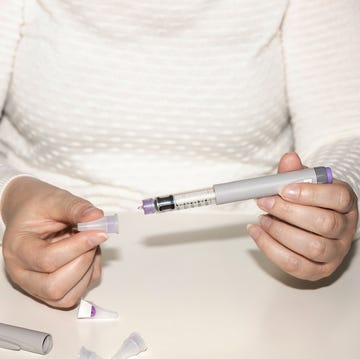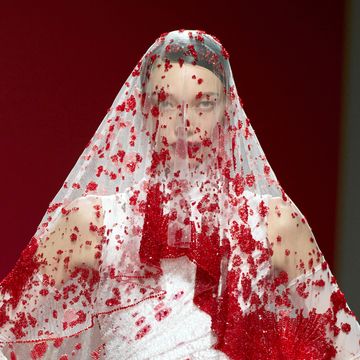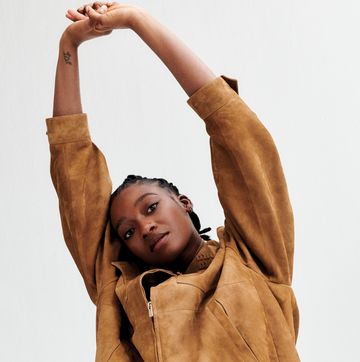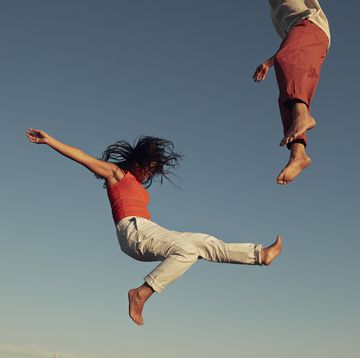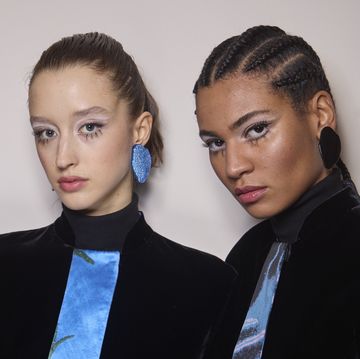It was a languorous summer afternoon, air shrill with the squeals of children relishing the six-week holiday. We were strolling through the park in our denim pedal pushers when I heard a loud bark. At the time, I wasn’t a fan of dogs, and this one sounded like it was right behind us. Charged by adrenaline and fear, I bolted, ignoring my friend calling after me. Heart pounding, I sprinted to the chip shop, and then –THUD!
I heard the snap of my glasses before they crashed to the ground; a throbbing pain shot through my forehead. Inside, two teenage boys jolted in shock, then roared with laughter.
‘Rahhh, man! She just ran into the door!’
Seconds later, my friend handed me my broken glasses. ‘Gosh, the dog wasn’t even chasing you,’ she muttered loudly.
I trailed behind her into the shop with my head down, my cheeks burning more than my new swollen bump. As well as feeling embarrassed about my clumsiness, I was ashamed that my friend had been witness to it.
I had never been able to exude that natural ‘cool’ factor that, in my young mind, went hand in hand with being Black. While my melanated counterparts – friends, my older brother, famous people I admired like the R&B singer Aaliyah – were able to emanate effortless swagger, I had to try twice as hard and barely came close enough.
I grew up in a council flat in Peckham, a three-storey redbrick with a tiny crumbling balcony for a garden. Twenty or so years ago, before it was hijacked by hipsters, Peckham was famed for its street culture. Tracksuit-wearing teens idled in parks and outside the chip shop. They greeted each other with a fist-pump and a ‘Safe, bruv’. As a kid, I craved initiation into this urban sorority. I wanted to be part of the club.
At the time, I don’t think I understood where this need to fit in came from, but I believe I wanted a sense of belonging and guidance on how to exist as a young Black girl. I also worried whether my Blackness would come into question: how Black am I if Peckham – the Mecca of street culture – didn’t rub off on me? Shouldn’t being cool be part of my DNA?
Sadly, for me, it wasn’t. For starters, I didn’t look the part. I wore gold, circular glasses that my granddad sometimes mistook for his, and my front two teeth, pre-braces, met together in the middle like a tent. My fashion sense screamed confused: a mismatched combination of my mother’s picking along with items I bought with my own pocket money in a desperate bid to fit in: a long, hand-me-down coat over Adidas tracksuit bottoms, rolled up to my ankles to show off my colourful Looney Tunes socks, and Nike trainers paired with a church-appropriate top.
My idea of what it meant to be cool was not only fuelled by those in my neighbourhood but also by the Black women I saw on TV. TLC, one of my favourite girl bands at the time, were the epitome of having swag, with their gelled-down baby hairs, baggy jeans and Timberland boots. Then there was Dionne Davenport, Stacey Dash’s character in the American high-school film Clueless. Like the members of TLC, Dionne always had her edges laid; her hair was never out of place. She was confident, quick-witted, sassy.
Many years later, I would come to realise her character was a common trope used by the white-dominated media as a way to negate the lack of representation of Black women on TV. However, the constant depiction of Black women being ‘fierce’ and ‘strong’ not only set an impossible standard for Black girls, but gave a limiting message: to get on in life, this is the way you need to be.
On the cusp of entering secondary school, I internalised the idea that, to fit in, I had to embody the ‘urban’ aesthetic and the poise of Dionne, who was never the butt of a joke.
So the transition began, starting with a trip to Pak’s Cosmetics, one of the many Afro-Caribbean hair and beauty shops on Peckham Rye Lane. Receipts listed stronghold gel, Dax styling wax and a boar-bristle brush (for the baby hairs), and weekends were spent drawing visual aids for my mum of zigzag cornrows, which she did her best to replicate.
My friends at my Black-majority secondary school must have got the same memo, because they wore their hair in a similar fashion and graffitied their textbooks and pencil cases too. And although I was starting to fit in, it was hard to ignore my growing discomfort. I wasn’t being myself.
In reality, I was more of a teacher’s pet. At home, I was still a kid at heart. I began to live in my head, but not as myself. I created an alter ego: the girl I wanted to be. Lola-Meree was her name. She sounded like she would be cool and popular.
So whether it was watching from the playground sidelines, as girls with hitched-up skirts rolled their hips to Sean Paul, or while my friends talked at full volume upstairs at the back of the double-decker bus, I imagined myself as Lola-Meree, seamlessly fitting in, being the ‘It’ girl.
That all changed when I was 13. By the time I reached year nine, my parents had split up and I went to live with my mum in Belvedere, spending weekends at my dad’s. Located outside London, Belvedere was worlds apart from Peckham. There were no bustling markets, Halal butchers, blasts of reggae music or someone preaching. No waft of a neighbour’s pounded yam and egusi stew. Instead, there was a newsagent, a church and a splash park that was actually used. I could count the number of Black people who lived there on one hand.
My new secondary school – in Greenwich, a 20-minute commute on the train – was a Catholic convent, so it was common to see nuns wander the grounds. I was struck by the make-up of my class. Not only was there a more even split between Black and white pupils (other ethnic groups were still in the minority), I noticed that many of the Black girls didn’t display that look or attitude I often associated with Blackness. For example, the most popular girl had thick glasses and her hair – fat cornrows with windblown edges – was a far cry from the thin, crisp styles I was used to. After school, rather than loitering outside with the boys, they would toddle to Greenwich Park and slide down hills using their rucksacks as sleighs. One girl was obsessed with the TV drama Charmed and drew its logo – an ancient Celtic symbol – on the back of her hand.
I was in awe of their individuality, their freedom to express themselves however they pleased. Every Black girl was embraced. If you were into rock music? Fine. If you were a fan of bubble-gum pink? Fine. If your thing was gelling your hair down across your forehead? That was fine as well.
The range was refreshing and, very quickly, I settled in. Finally, I could be… me. No longer did I live vicariously through my alter ego. The real Lizzie, I discovered, was goofy, shared random thoughts aloud and stirred a lot of laughter in the classroom. She didn’t care if she was the butt of the joke, because her awkwardness, here, was endearing. When she fell during a trampoline session like a capsized beetle, legs kicking, she guffawed until tears pooled in her eyes.
I had found my true self and I was not going to let her go. Even during the shaky bridge of my college years, I felt my way until I found the rope. Later in life, I would find myself drawn to misfits – a queer student with a lisp, an eccentric co-worker with a passion for bees – people who do not easily fit into the gingerbread-man moulds that society wants to shove us in.
Representation in film and TV is improving. I idolise Issa Rae’s character from HBO’s Insecure (a self-proclaimed ‘awkward Black girl’), Michaela Coel, and Lynn from Girlfriends. These actors and their characters have helped to rewrite the narrative of what it means to be a Black woman: being yourself is enough, so express yourself freely. The pigment of your skin is not a manual for how you must operate in this world.
What a blessing it would have been if I had seen such variety growing up. I’d have saved myself years of self-scrutiny, picking and pulling at loose threads: faulty bits that do not need to come undone, but are the best part of me.
Yinka, Where is Your Huzband? by Lizzie Damilola Blackburn is out now.
This article appeared in the April 2022 issue of ELLE UK.






